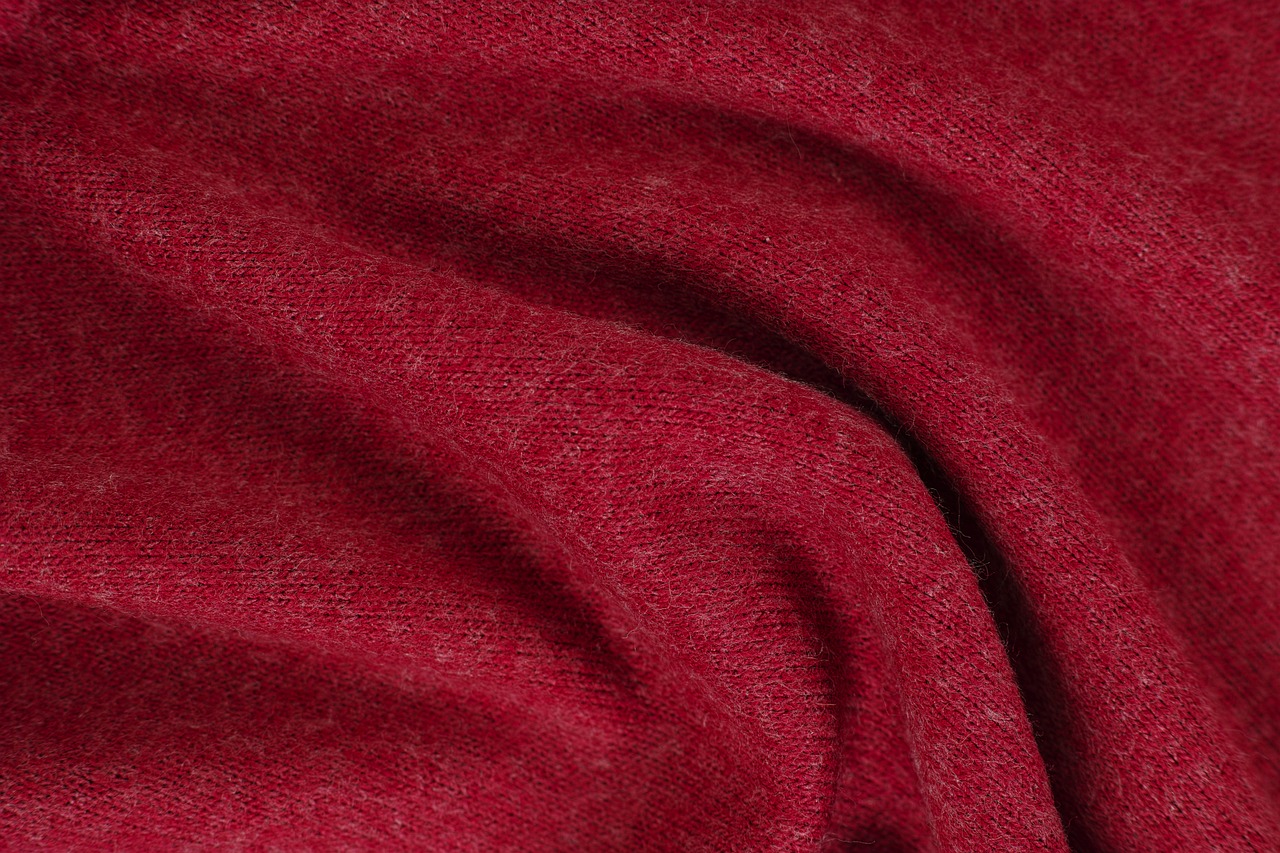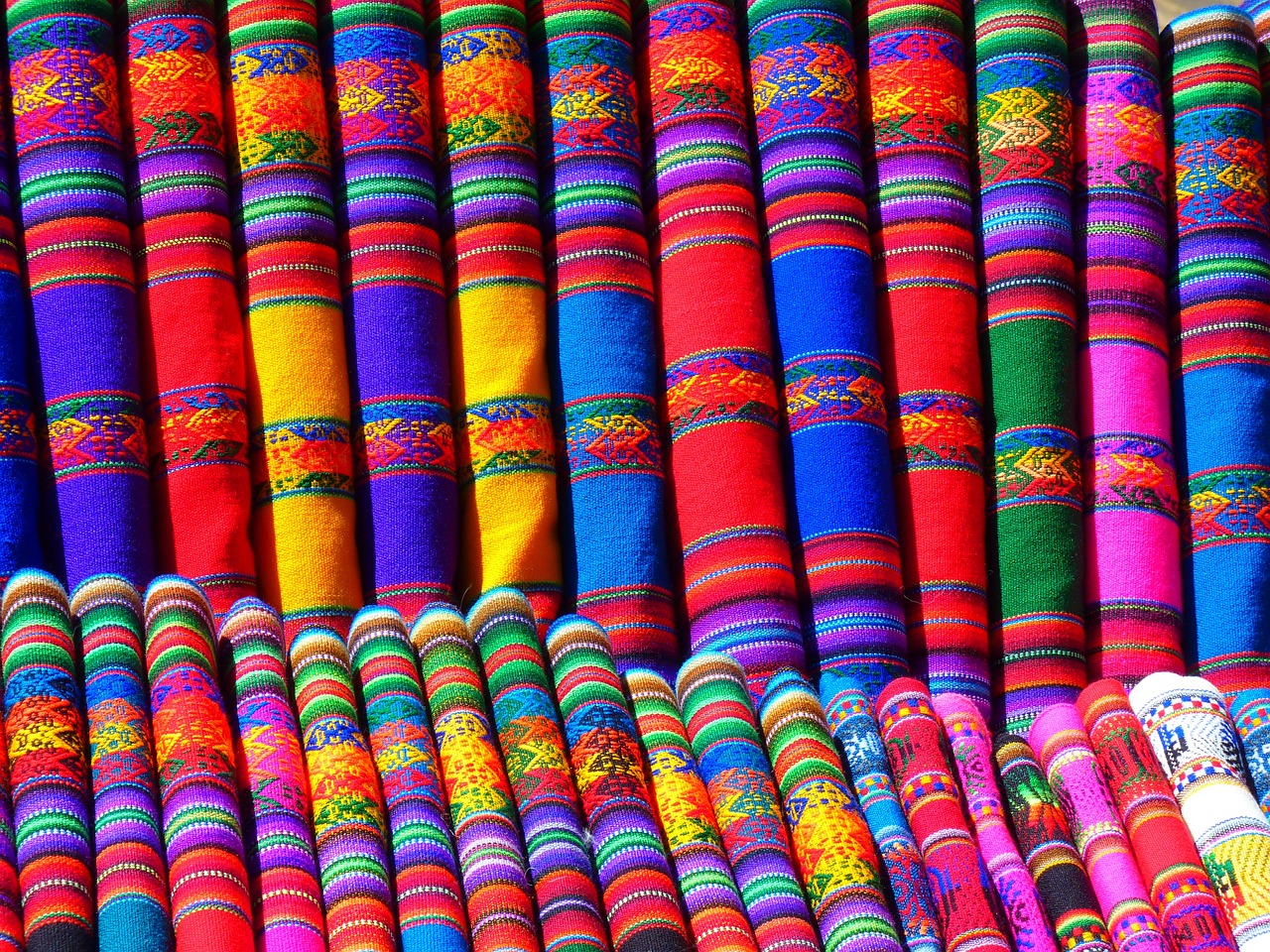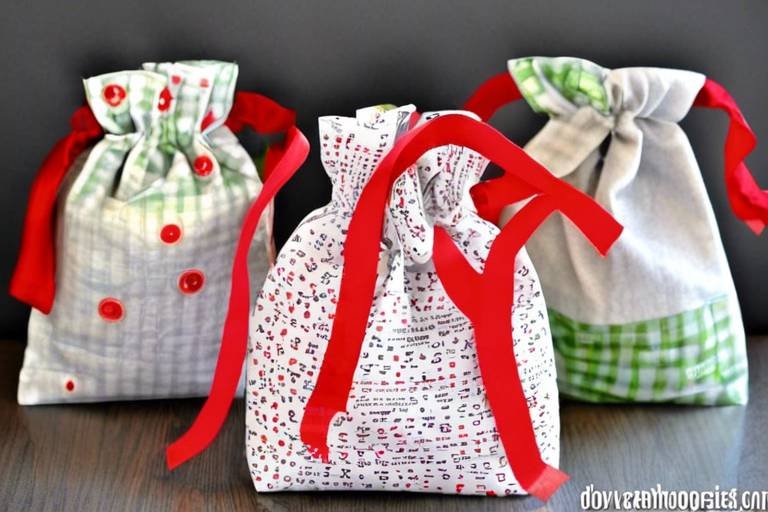How to Make Your Own Hand-dyed Fabrics
Are you ready to dive into the colorful world of hand-dyed fabrics? Creating your own unique textiles can be a rewarding and creative process that allows you to express your individual style. By following this guide, you will learn the art of hand-dyeing fabrics right in the comfort of your own home. From selecting the perfect fabrics to mastering various dyeing techniques, get ready to unleash your creativity and make stunning pieces that truly stand out.

Selecting the Right Fabrics
When it comes to hand-dyeing fabrics, the first step is selecting the right type of fabric. The fabric you choose will greatly influence the outcome of your dyeing project. Different fabrics, such as cotton, silk, and linen, have unique characteristics that affect how they absorb and hold onto dyes.
Cotton is a popular choice for beginners due to its absorbent nature, making it easier to work with dyes and achieve vibrant colors. Silk, on the other hand, offers a luxurious sheen and drapes beautifully, but requires more delicate handling during the dyeing process. Linen is known for its durability and textured appearance, providing a unique canvas for dye experimentation.
Consider the final look and feel you want to achieve when selecting your fabric. Do you prefer a smooth and crisp finish, or are you aiming for a soft and flowing texture? Understanding the characteristics of different fabrics will help you make an informed decision and ensure successful results in your hand-dyeing endeavors.

Gathering the Necessary Materials
When it comes to hand-dyeing fabrics, having the right materials on hand is essential for a successful and enjoyable experience. Before you dive into the colorful world of fabric dyeing, take the time to gather all the necessary supplies to ensure a smooth process from start to finish.
First and foremost, you will need a selection of fabric dyes in various colors to bring your creative vision to life. Make sure to choose dyes that are suitable for the type of fabric you plan to dye, whether it's cotton, silk, or linen. Additionally, consider opting for high-quality dyes that will provide vibrant and long-lasting colors.
Alongside fabric dyes, you will also need fixatives to help set the colors and prevent them from fading over time. Fixatives play a crucial role in ensuring that your hand-dyed fabrics maintain their brilliance wash after wash. Be sure to follow the manufacturer's instructions when using fixatives to achieve the best results.
When it comes to tools, having a set of brushes in different sizes and shapes will come in handy for applying dyes to your fabrics. Brushes allow for precise application and intricate designs, giving you full control over the dyeing process. Additionally, containers for mixing dyes, measuring cups, and stirring sticks are essential for preparing your dye solutions.
Protective gear is also a must-have when working with fabric dyes to ensure your safety and prevent any unwanted stains on your skin or clothing. Consider wearing gloves, aprons, and goggles to shield yourself from potential splatters and spills. Safety should always be a top priority when handling dyes.
Lastly, having a dedicated workspace that is well-ventilated and easy to clean is crucial for a hassle-free dyeing experience. Make sure you have a flat surface to work on, as well as access to water for rinsing fabrics and cleaning up any spills. By setting up a functional and organized workspace, you can focus on unleashing your creativity without any distractions.

Exploring Dyeing Techniques
When it comes to , the world of hand-dyeing offers a vast array of possibilities to create stunning and unique fabrics. From the classic tie-dye method to the intricate shibori patterns, each technique brings its own charm and appeal to the art of fabric dyeing.
One popular technique is dip-dyeing, where the fabric is dipped into a dye bath to create a gradient effect. This method allows for smooth color transitions and is great for achieving ombre designs on your fabrics. It's a simple yet effective way to add depth and dimension to your creations.
Another exciting technique is tie-dyeing, which involves twisting, folding, and tying the fabric before applying dyes. This method results in vibrant and psychedelic patterns that are full of personality and character. With tie-dyeing, no two pieces are ever the same, making each creation truly one-of-a-kind.
Shibori dyeing is a traditional Japanese technique that involves binding, folding, or pleating the fabric before dyeing. This method produces intricate and mesmerizing patterns that resemble water ripples or geometric shapes. Shibori allows for endless experimentation and creativity, making it a favorite among textile artists.
For those looking to add a personal touch to their fabrics, hand-painting is a fantastic technique to explore. Using brushes or sponges, you can apply dyes directly onto the fabric to create detailed designs and motifs. Hand-painting offers complete control over the color placement and allows for intricate artwork to come to life on your fabrics.
Whether you prefer bold and vibrant colors or subtle pastel hues, the world of dyeing techniques offers something for everyone. Experimenting with different methods can lead to unexpected and delightful results, allowing you to unleash your creativity and express your unique style through hand-dyed fabrics.

Preparing the Dye Bath
When it comes to hand-dyeing fabrics, preparing the dye bath is a crucial step that can significantly impact the final result of your project. The dye bath is where the magic happens, where plain fabrics transform into vibrant works of art. To create a successful dye bath, you need to pay attention to several key factors.
First and foremost, you must carefully measure and mix the dyes according to the instructions provided by the manufacturer. Different dyes require specific ratios and concentrations to achieve the desired colors. It's essential to follow these guidelines to ensure that your colors turn out bright and consistent.
Additionally, consider the temperature of the water when preparing the dye bath. Some dyes require hot water to activate and set properly, while others work best with cold water. Make sure to read the dye instructions carefully to determine the optimal water temperature for your specific dye type.
Furthermore, adding fixatives or mordants to the dye bath can help improve colorfastness and ensure that the dyes bond effectively with the fabric fibers. These chemicals play a crucial role in enhancing the longevity and vibrancy of your hand-dyed fabrics, so don't skip this important step.
When mixing the dyes and additives in the water, use a non-reactive container to avoid any unwanted chemical reactions that could affect the dyeing process. Plastic or stainless steel containers are ideal for preparing dye baths, as they won't interact with the dyes and alter the colors.
Lastly, always remember to wear protective gear, such as gloves and a mask, when working with dyes and chemicals. Safety should be your top priority to prevent any skin irritation or respiratory issues. By taking the necessary precautions and following proper procedures, you can create a successful dye bath and achieve stunning results with your hand-dyed fabrics.

Applying Dyes to Fabrics
When it comes to , there are various methods you can use to achieve stunning results. One popular technique is painting, where you can use brushes or sponges to apply dyes directly onto the fabric. This method allows for precise control over the placement of colors and is great for creating intricate designs.
Another common approach is spraying, which involves using spray bottles to mist dyes onto the fabric. This technique creates a beautiful, diffused effect and is perfect for achieving a soft, blended look. Additionally, dipping fabrics into a dye bath is a classic method that produces bold, striking patterns as the fabric absorbs the color.
Experimenting with color combinations is key to creating unique and eye-catching designs. By blending different hues and shades, you can achieve a wide range of effects, from subtle gradients to vibrant contrasts. Mixing dyes to create custom colors opens up endless possibilities for personalizing your hand-dyed fabrics.
One important aspect to consider when applying dyes is blending techniques. Techniques such as layering colors or using resist methods can add depth and dimension to your designs. By strategically combining colors and applying dyes in layers, you can create intricate patterns and textures that make your fabrics truly stand out.
Remember to experiment and explore different application methods to find what works best for your desired outcome. Whether you prefer a more controlled approach with painting or enjoy the organic results of dipping and spraying, each technique offers a unique way to add color and personality to your fabrics.

Setting and Curing the Colors
Setting and curing the colors is a crucial step in the hand-dyeing process to ensure the longevity and vibrancy of your creations. After you have applied the dyes to your fabrics and allowed them to absorb the colors, it's time to set the dyes to make them permanent. This step involves using different methods to fix the colors into the fabric fibers, preventing them from fading or bleeding with washing and wear.
One common method for setting hand-dyed fabrics is heat setting. This process involves using heat to bond the dyes to the fibers of the fabric, making the colors more resistant to washing. Heat setting can be done using an iron, a clothes dryer, or a heat press, depending on the type of fabric and dye used. It's essential to follow the specific instructions provided with your dyes to ensure proper heat setting.
Another method for setting colors is chemical fixing, which involves using a fixative or mordant to help the dyes adhere to the fabric. Fixatives can enhance the colorfastness of the dyes and make them more resistant to fading. Common fixatives include vinegar, salt, or commercial products designed for this purpose. Always follow the manufacturer's instructions when using fixatives to set your hand-dyed fabrics.
Once you have set the colors, it's important to allow the fabrics to cure properly. Curing helps the dyes fully bond with the fibers and ensures that the colors remain bright and vibrant over time. Depending on the type of dyes used, curing times may vary, so it's essential to follow the recommended curing time provided by the dye manufacturer.
Properly setting and curing the colors of your hand-dyed fabrics will not only enhance their appearance but also increase their durability and colorfastness. By following the correct procedures and techniques for setting and curing, you can enjoy your beautifully dyed creations for years to come.

Washing and Caring for Hand-dyed Fabrics
When it comes to washing and caring for hand-dyed fabrics, special attention is necessary to maintain the vibrancy and longevity of the colors. Hand-dyed fabrics require delicate handling to prevent fading or bleeding of the dyes.
One essential tip for washing hand-dyed fabrics is to use cold water and a gentle detergent to avoid damaging the colors. It is recommended to hand wash the fabrics separately to prevent any color transfer to other garments.
If machine washing is necessary, ensure that the fabrics are washed on a gentle cycle with like colors. Using a laundry bag or washing the fabrics inside out can also help protect the colors during the washing process.
When drying hand-dyed fabrics, avoid direct sunlight as it can fade the colors over time. Instead, air-dry the fabrics in a shaded area or use a low heat setting in the dryer to preserve the vibrancy of the dyes.
Ironing hand-dyed fabrics should be done on the reverse side or with a pressing cloth to prevent direct contact between the iron and the dyes. Using a low heat setting is advisable to avoid damaging the colors.
Proper storage of hand-dyed fabrics is crucial to prevent color fading and damage. Store the fabrics in a cool, dry place away from direct sunlight to maintain the integrity of the dyes. Avoid folding the fabrics for extended periods to prevent creasing and color distortion.
Regular care and maintenance of hand-dyed fabrics will ensure that your creations retain their beauty and quality for years to come. By following these washing and caring tips, you can enjoy your hand-dyed textiles for a long time.

Experimenting with Advanced Techniques
Are you ready to take your hand-dyeing skills to the next level? It's time to delve into the world of advanced techniques and push the boundaries of creativity. Experimenting with advanced techniques opens up a whole new realm of possibilities, allowing you to create intricate designs and unique effects on your fabrics.
One advanced technique to explore is resist dyeing, where certain parts of the fabric are blocked off to prevent the dye from reaching them. This results in striking patterns and contrasts that add depth and complexity to your designs. By using various resist materials like wax, tape, or even stitching, you can achieve stunning visual effects that set your hand-dyed fabrics apart.
Another exciting avenue to venture into is overdyeing, a process where fabrics are dyed multiple times to create layered colors and textures. By strategically layering different hues, you can create rich, multidimensional tones that add a dynamic element to your textiles. Overdyeing allows for endless color combinations and blending possibilities, giving you the freedom to experiment and create truly one-of-a-kind pieces.
If you're looking to incorporate elements from nature into your hand-dyeing practice, eco-printing is a fascinating technique to explore. By using natural materials like leaves, flowers, and bark, you can transfer their pigments onto fabric through a process of steaming or boiling. This results in organic, botanical imprints that add a whimsical and earthy touch to your creations. Eco-printing allows you to connect with nature in a creative way, producing unique designs inspired by the beauty of the natural world.
Frequently Asked Questions
- Can I use any type of fabric for hand-dyeing?
While some fabrics are more suitable for hand-dyeing than others, it's essential to choose natural fibers like cotton, silk, or linen for the best results. These materials absorb dyes well and retain colors vibrantly.
- Do I need special equipment to start hand-dyeing?
Basic hand-dyeing can be done with simple tools like brushes, containers, and dyes that are readily available. However, investing in items like a dye fixative and protective gear is recommended for a more professional outcome.
- How can I prevent colors from fading after dyeing?
Properly setting the colors by following the recommended methods, such as heat setting or chemical fixing, can help prevent fading. Additionally, washing the hand-dyed fabrics gently and avoiding harsh detergents can maintain color longevity.



















